Estonia received the Blue Spear coastal missile system
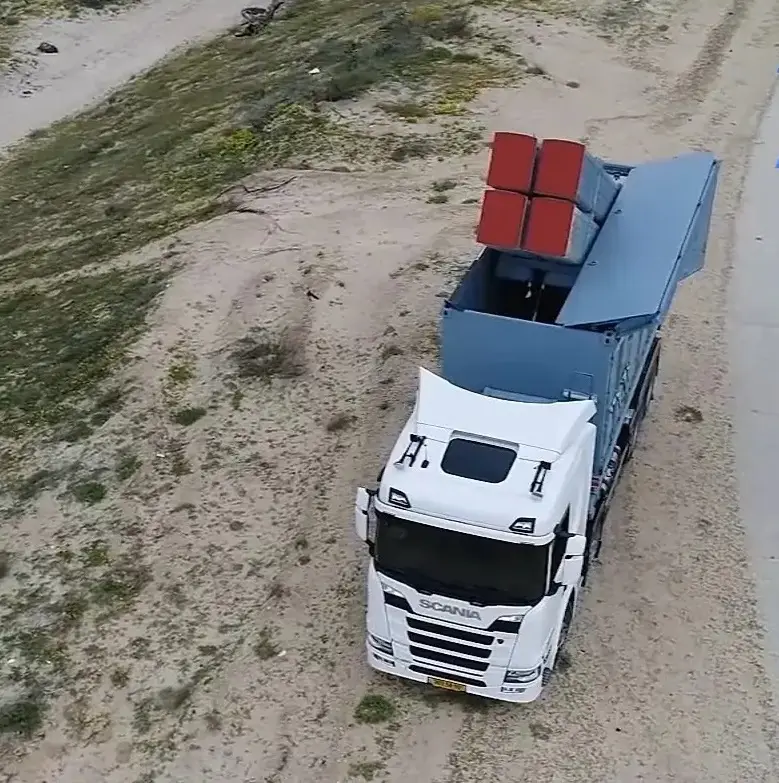
Blue Spear launcher on a vehicle chassis
After several years of waiting, the Estonian armed forces received and adopted the first Blue Spear coastal missile system, jointly developed by Israel and Singapore. In the near future, this complex should go on combat duty and improve the capabilities of the Estonian coastal troops to protect the country’s maritime borders. It is curious that Estonia did not just become a buyer of the new missile system - this product was actually developed specifically for it.
Under a new name
In the middle of the last decade, the Israeli corporation IAI developed and tested a promising subsonic anti-ship missile, Gabriel 5. In 2018, this product was brought into mass production. The starting customer for the new anti-ship missile system was the Israeli Navy, which armed modern ships with it. An order was also received from Finland, which wants to place the Gabriels on promising boats and ships.
In the summer of 2020, the Israeli company IAI and the Singaporean ST Engineering Land Systems announced the creation of a joint venture called Proteus Advanced Systems. Its goal was market promotion, production and sale of promising Gabriel 5 anti-ship missiles. At the same time, the missile for export was renamed Blue Spear 5G.
It was assumed that Proteus would receive orders from the navies of Singapore and other countries in Southeast Asia, and the interest of the Navy from other regions was not excluded. In general, this calculation was justified: in December 2023, the Singapore Navy ordered a number of Blue Spear 5G products for the future re-equipment of some of its ships. The contract will be completed in the coming years.
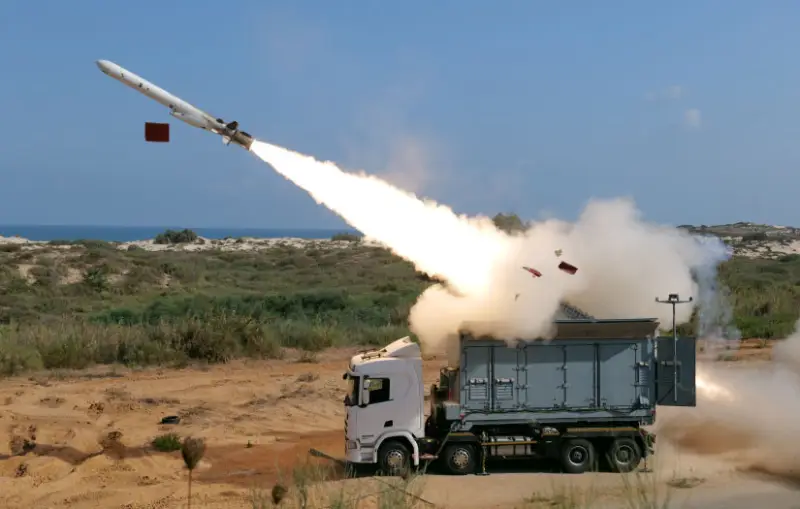
Rocket test launch
At the same time, despite past expectations, Singapore did not become the first foreign buyer of the Blue Spear anti-ship missile system. The first order for such weapons was placed by Estonia, and to fulfill it, Proteus Advanced Systems had to develop a new version of the missile system.
Especially for Estonia
The contract for the supply of Blue Spear 5G ballistic missile systems and anti-ship missiles to the Estonian armed forces was signed at the beginning of October 2021. The customer was the Estonian State Defense Investment Center of the Ministry of Defense (Riigi Kaitseinvesteeringute Keskus - RKIK), the contractor was Proteus Advanced Systems. Official communications traditionally spoke of the great importance of such a contract and future deliveries, but the details that were of interest to everyone were not given.
According to unofficial data at the time, Estonia wanted to receive one missile system, including a launcher or installations, missiles and other means. Apparently, the contract also included personnel training services, equipment maintenance, etc.
В the news the cost of the contract was not reported. However, it was known that the Estonian military budget for 2021 allocated 50 million euros for the purchase of ballistic missile systems with anti-ship missiles. The Israeli press cited similar figures, citing their sources, but the Estonian media also mentioned twice the numbers. According to the budget, delivery of finished products was expected within 2-3 years after signing the contract.
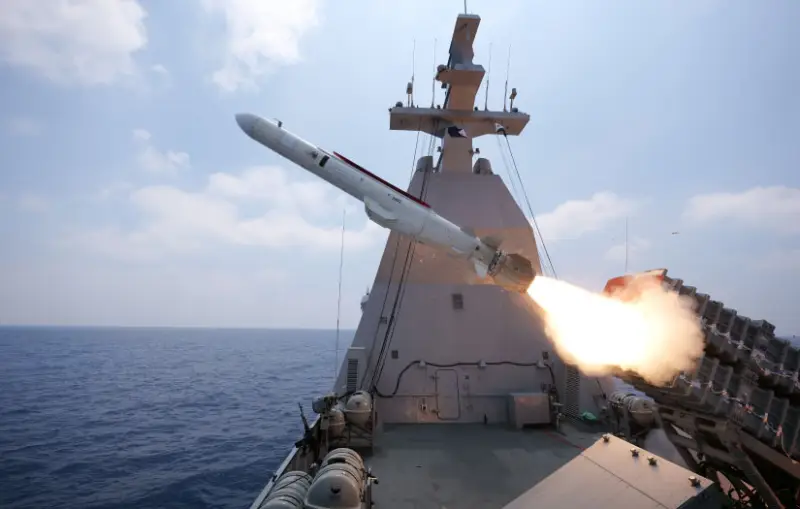
Launch of the Blue Spear anti-ship missile from a surface carrier
At the time of the agreement between RKIK and Proteus, the Blue Spear 5G complex existed only in a ship configuration. To meet the requirements of the Estonian Navy, the contractor company had to develop a coastal complex almost from scratch based on existing anti-ship missiles and related equipment.
Proteus Advanced Systems coped with the task, and within the given time frame, a project was developed to transfer the rocket to a new base. IAI then manufactured the necessary products, such as the launcher, control system, etc., which were sent to Estonia. A chassis was ordered from Sweden to accommodate all the units. The final assembly of the DBK was carried out by the Estonian company Pro Lift OÜ.
On February 10, 2024, the RKIK Center announced the receipt of the ordered missile system. The finished product, all its elements and ammunition were transferred to the Estonian armed forces. Now they have to master the equipment and put it on combat duty. It is not difficult to calculate that the contractors met the deadlines established by the contract. Two years and four months passed from its signing to the delivery of the finished equipment.
Technical issues
A coastal complex was developed especially for Estonia based on the existing Blue Spear 5G / Gabriel 5 missile. Using available components, Proteus Advanced Systems produced a mobile system capable of moving along roads and changing firing positions, as well as attacking surface targets in a fairly wide range of ranges.
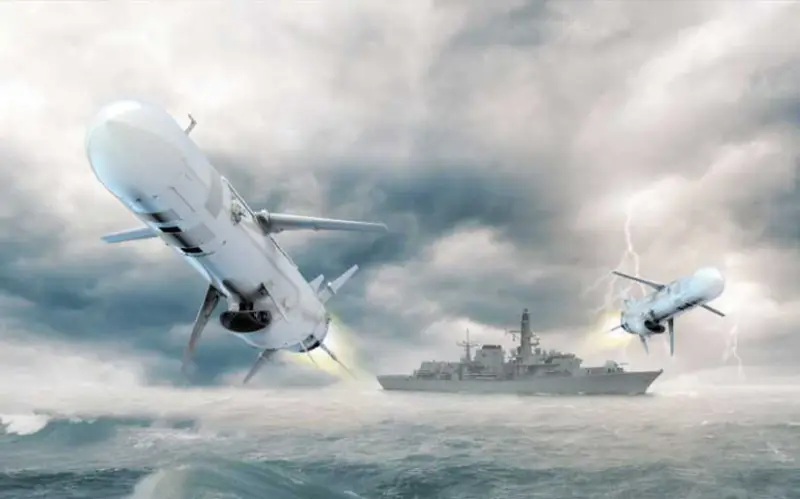
Rockets in flight
The DBK is built on a four-axle Scania truck chassis. Apparently, the car retained all the key components and at the same time received new devices. For example, controls could be placed in the standard cockpit. A launcher is mounted on the chassis, disguised as a standard cargo container. It is understood that in most situations and for a number of reconnaissance assets, the Blue Spear complex will be indistinguishable from a regular truck.
The container has an opening roof and a tailgate. Inside is a lifting launcher with four transport and launch containers for Blue Spear 5G missiles. To start, the installation is placed in an inclined position; shooting is carried out forward, on top of the cabin.
The Blue Spear 5G product is a traditional-looking anti-ship cruise missile. It is made in a cylindrical body 5,5 m long with some protruding devices. A high-mounted folding wing is placed in the central part of the fuselage; underneath there is a pair of L-shaped stabilizers. The tail has additional planes, incl. rudders. Starting weight – 1250 kg.
The missile is equipped with a solid propellant launch engine and a turbojet propulsion system. The air intake of the latter is placed under the body. The flight speed reaches 0,85 M. The range of export anti-ship missiles is limited to 290 km. Several flight profiles are provided.
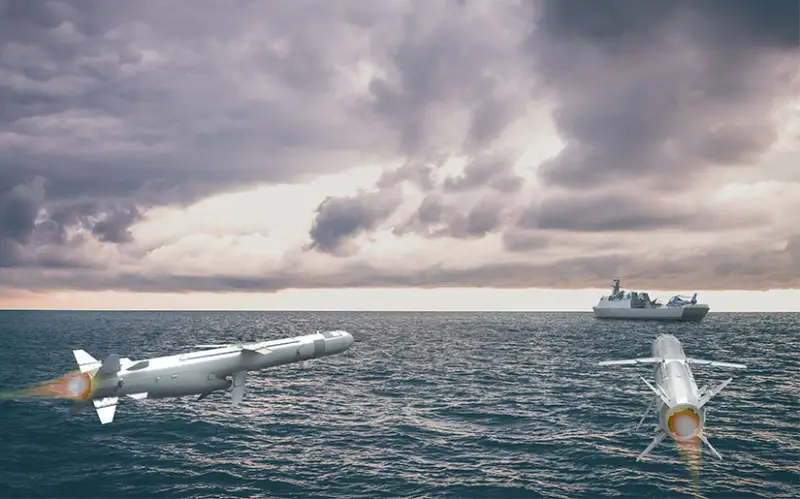
The missile control system includes satellite and inertial navigation devices, as well as an active radar homing head. There is a two-way communication system with the carrier, through which it is possible to receive data from the rocket and transmit commands, for example, to change the target in flight.
The target is hit by a high-explosive fragmentation warhead weighing 150 kg. This is enough to damage and disable ships of small and medium displacement, up to several thousand tons.
Limited results
The Estonian armed forces cannot boast of quantitative and qualitative indicators. In addition, they lack some of the combat capabilities required for a full-fledged modern army. Thus, until recently, Estonia did not have the forces and means of a separate specialized coastal defense. The newly received Blue Spear 5G missile system is the first of its kind and fills a void.
It is obvious that Estonia's capabilities to protect its maritime borders will increase significantly. However, the latest news should not be overestimated either. Apparently, the Estonian army will receive no more than a few launchers for anti-ship missiles, and their overall combat potential will be limited. It is unclear whether coastal defense will be further strengthened in the future. In any case, one cannot expect a fundamental increase in combat qualities.
Information